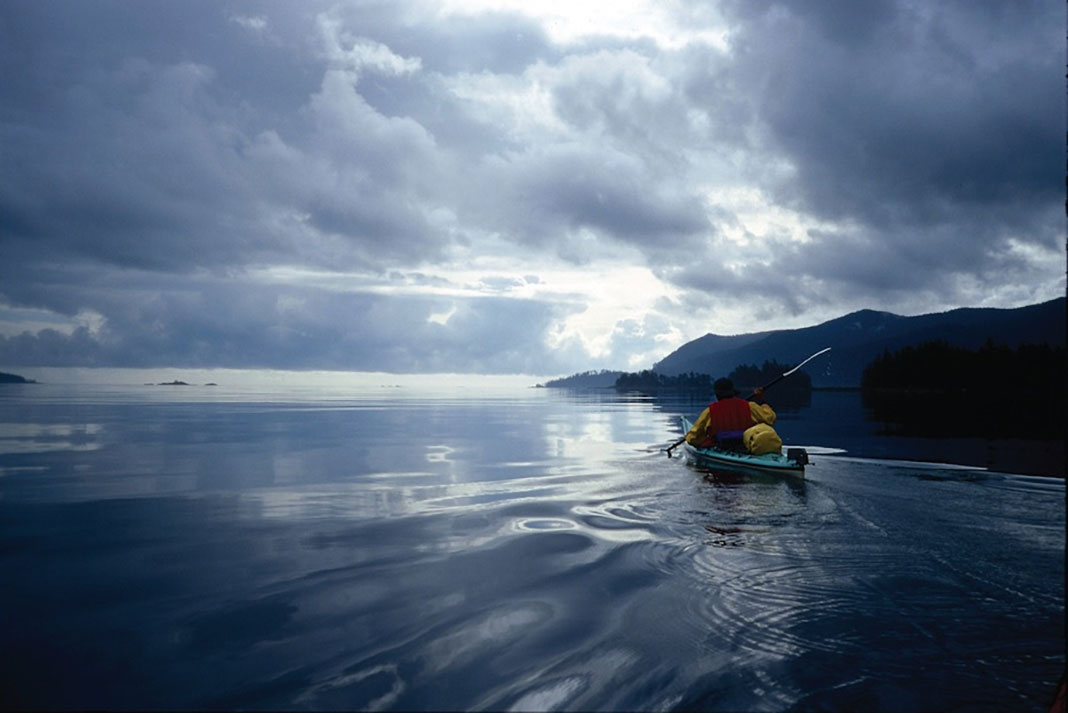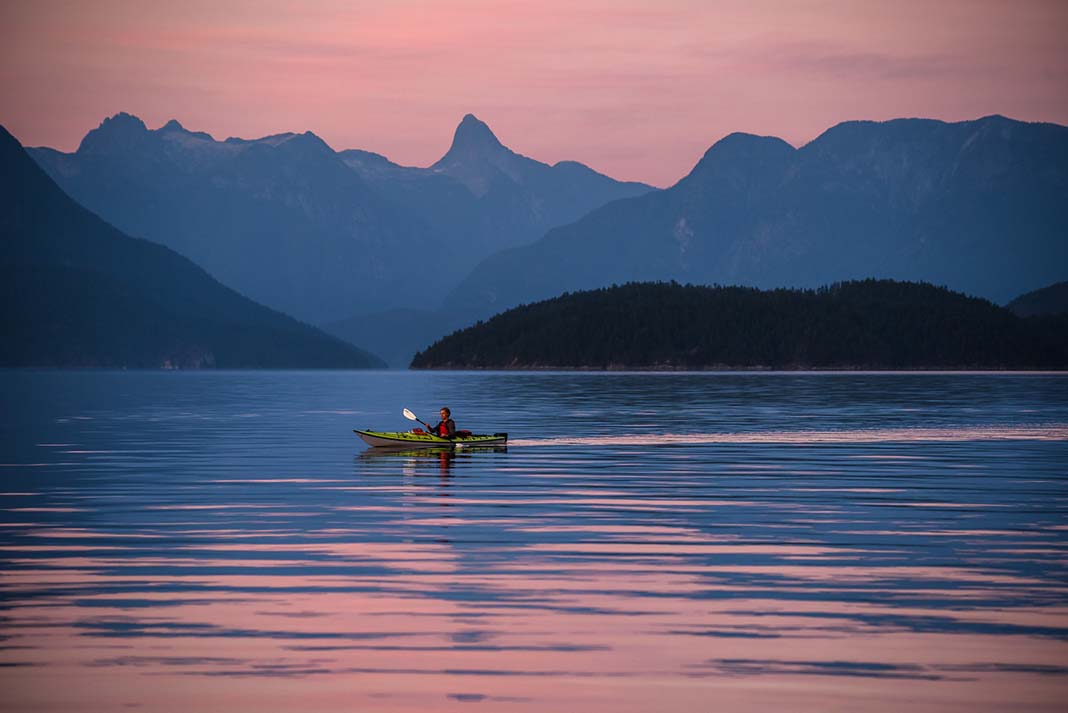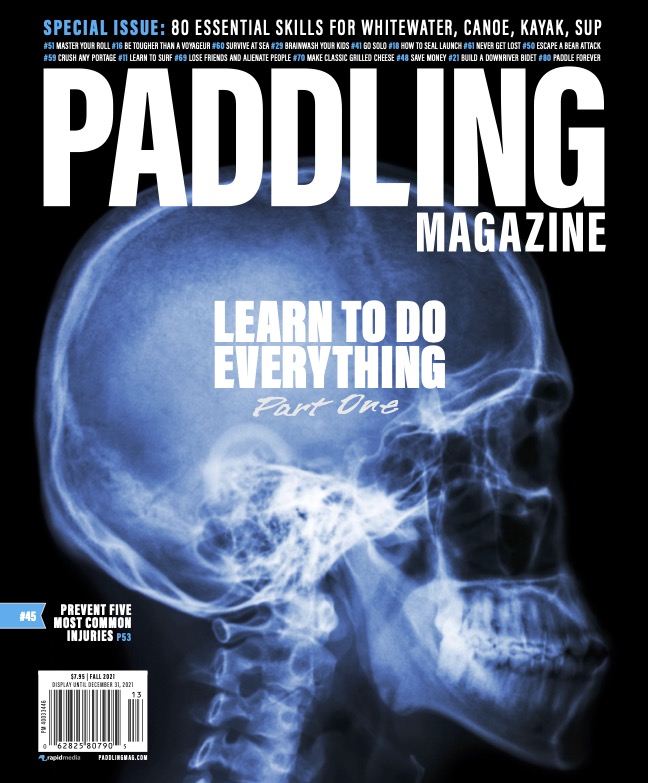The director of programming at Hudson Valley Outfitters in New York has mastered one of the keys to expedition paddling: the long-distance day. Ray Fusco once paddled 61 nautical miles (113 kilometres) in one go, cruising between the New York towns of Hudson and Cold Spring in 14 hours. At the 2005 Blackburn Challenge, Ray placed second in his division, finishing the East Coast’s legendary 20-mile open-ocean race in a time of 3:26. To help extend the distance of all our expeditions, we asked Ray for his top long haul kayaking secrets.
5 tips for long distance kayaking
1 Do the math
Calories in must equal calories out. Plan your calorie consumption so you don’t run out of energy. Estimate about 100 calories per nautical mile at a speed of four and half to five knots. Read the labels on food and know how many calories you are taking with you. Balance your diet with a mix of healthy foods throughout the day to avoid the “bonk.” A lunch break for comfort food like sandwiches, chips and candy bars is a good rest stop, but supplement with high-carbohydrate, protein-rich energy bars and gel packs while paddling.

For a 60-mile day, try five energy bars, five gels, two sandwiches, a candy bar and a mix of fresh or dried fruit. Duct-tape gel packs to the deck of your boat for fast, easy consumption. Place the tape across the opening tab so a simple pull will release the gel pack and open it at the same time.
2 Solve your drinking problems
For a 14-hour, 60-mile day, you’ll need at least six litres of liquid. For clean hydration and electrolyte balance, bring three litres of water and three litres of energy drink. Hydration and fuel intake are very closely related. Often, consuming a half or full litre of energy drink can be a perfect fix for simple fatigue, or maybe suck down a gel pack with some clean water to drive you for a few more hours.
Try using hydration bladders with a long hose, holding the bite valve in your mouth during peak exertion for quick, constant hydration. And get it off your back! The more stuff you have on, the less torso rotation you will achieve.
3 It’s faster to drive
Push with your legs to drive your boat past your paddle and through the water. Even the best paddlers drop in and out of good leg drive. It is very easy to forget to drive your legs once you have reached your 3,000th stroke! Find the comfort zone in your cockpit for maximum leg drive. Then reach, pull hard and smooth, and drive with the legs for a really good glide.

4 Here’s the catch
Remember your stroke recovery (the part where your blade exits the water) needs to be clean and quick but the catch (the part where your blade enters the water) is most important. Jam your blade in the water and wait one full second to make sure your blade is completely submerged. Then pull like fury.
5 Mix it up
Experiment with your cadence. Find your sweet spot and adjust up and down. If you are comfortable with 50 strokes a minute how fast will you fatigue at 75? Can you pull harder at 60 and not burn out too fast?
Experimentation is equally important for fuel intake. Try different fuel and hydration sources under varying work loads. Conditions will also affect your results so pay attention to your body and learn how it performs in a wide variety of conditions.
This article originally appeared in Adventure Kayak, Spring 2006 and in Paddling Magazine Issue 65. Subscribe to Paddling Magazine’s print and digital editions here, or download the Paddling Magazine app and browse the digital archives here.
If you’re long distance kayaking, get used to seeing the sunset. | Feature photo: Andrew Strain




Agree with everything but one. I, too, have long distance paddling experience including a 50 mile day in the northern most section of British Columbia with a 30 day load in my kayak.
There is no way one could do this with a one second delay from planting the blade to applying power. A cadence of 60 (60 strokes per second) as is mentioned would be entirely taken up by these delays. In addition, the most productive part of the stroke occurs at the first half of the stroke cycle, which would be exactly where a long pause is.